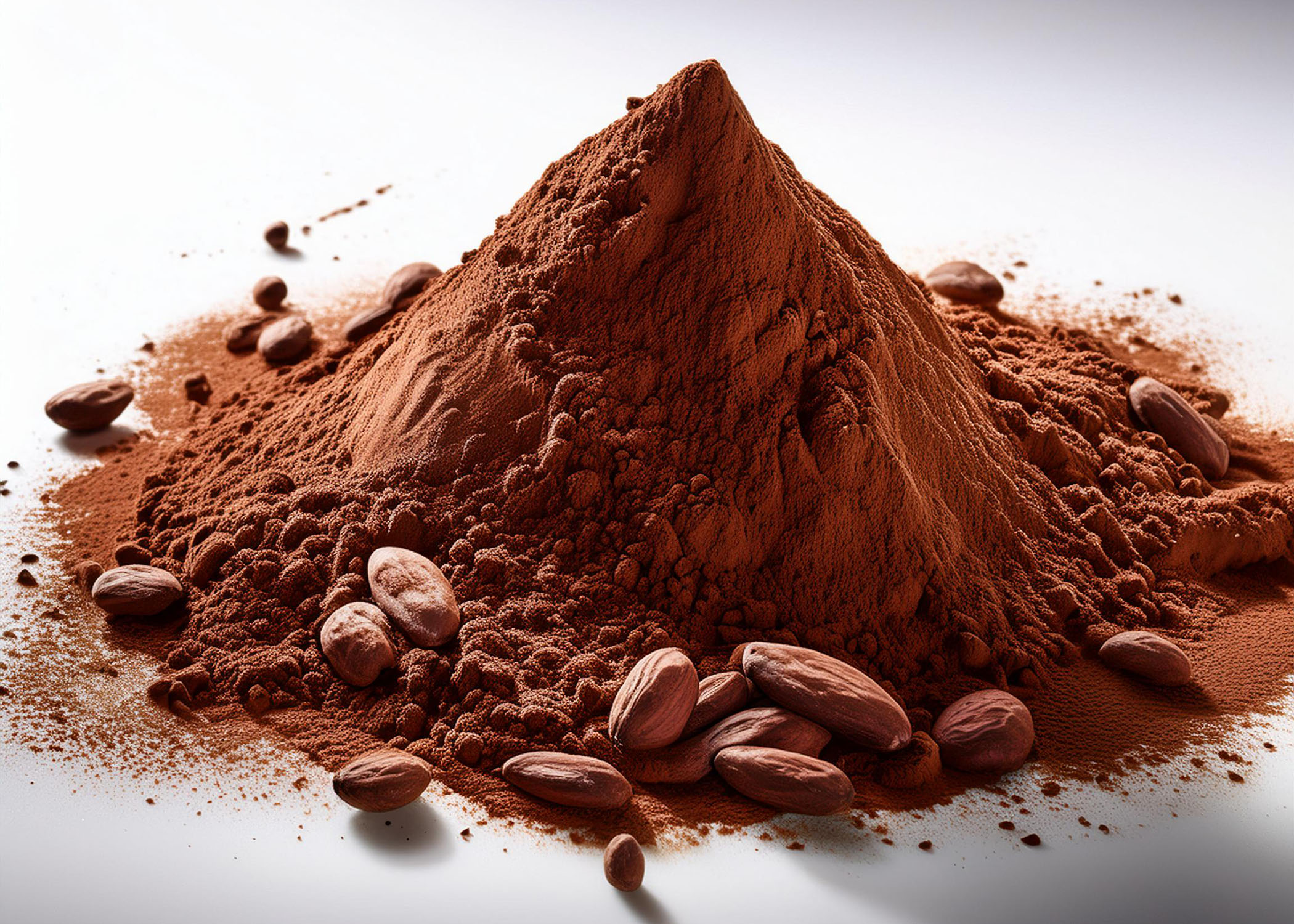Botanical Name: Theobroma cacao
Cocoa, derived from the seeds of the cacao tree, is a versatile and essential ingredient in a wide range of culinary applications, from chocolate making to baked goods and savory dishes. Its rich flavor and numerous health benefits have made cocoa a staple in cultures across the globe for thousands of years. Native to Central and South America, cocoa has been cultivated and consumed by civilizations like the Mayans and Aztecs, who considered it the “food of the gods,” a fact reflected in the botanical name Theobroma, meaning “food of the gods” in Greek.
Cocoa begins as the seeds or beans from the fruit of the cacao tree. These beans are harvested from large, pod-like fruits, fermented, dried, and roasted. Once roasted, the outer shell is removed, leaving behind cacao nibs, which are ground into a thick paste known as chocolate liquor or cocoa mass. From there, cocoa butter is separated from the solids, leaving the powder known as cocoa powder, which is widely used in cooking and baking.
There are two types of cocoa powder: natural and Dutch-processed. Natural cocoa is more acidic, with a sharp, slightly bitter taste, while Dutch-processed cocoa has been treated with an alkalizing agent to neutralize its acidity, resulting in a milder, smoother flavor and a darker color. Both types are commonly used in different culinary applications, depending on the desired flavor profile.
Cocoa is best known for its role in chocolate production, forming the foundation of all types of chocolate, from dark to milk to white chocolate (which uses only cocoa butter and no cocoa solids). Its deep, complex flavor profile—bitter, slightly sweet, earthy, and rich—makes it a highly sought-after ingredient in a variety of confections.
In baking, cocoa powder is a key ingredient in brownies, cakes, cookies, mousses, and ganaches, adding a robust chocolate flavor. It is often paired with sugar and fats, like butter or cream, to balance out its natural bitterness. Cocoa is also commonly used in beverages, such as hot chocolate or mocha, where its flavor is complemented by milk, sugar, or coffee. Many gourmet hot chocolates are made using high-quality cocoa powder or melted chocolate, creating a rich, luxurious drink.
Cocoa’s use is not limited to sweets. In some regions, cocoa plays an important role in savory dishes. For example, mole, a traditional Mexican sauce, incorporates cocoa to add depth and complexity to its blend of spices, chiles, and other ingredients. Cocoa’s earthy, slightly bitter qualities make it an ideal component for balancing out the heat and acidity of spicy dishes.

